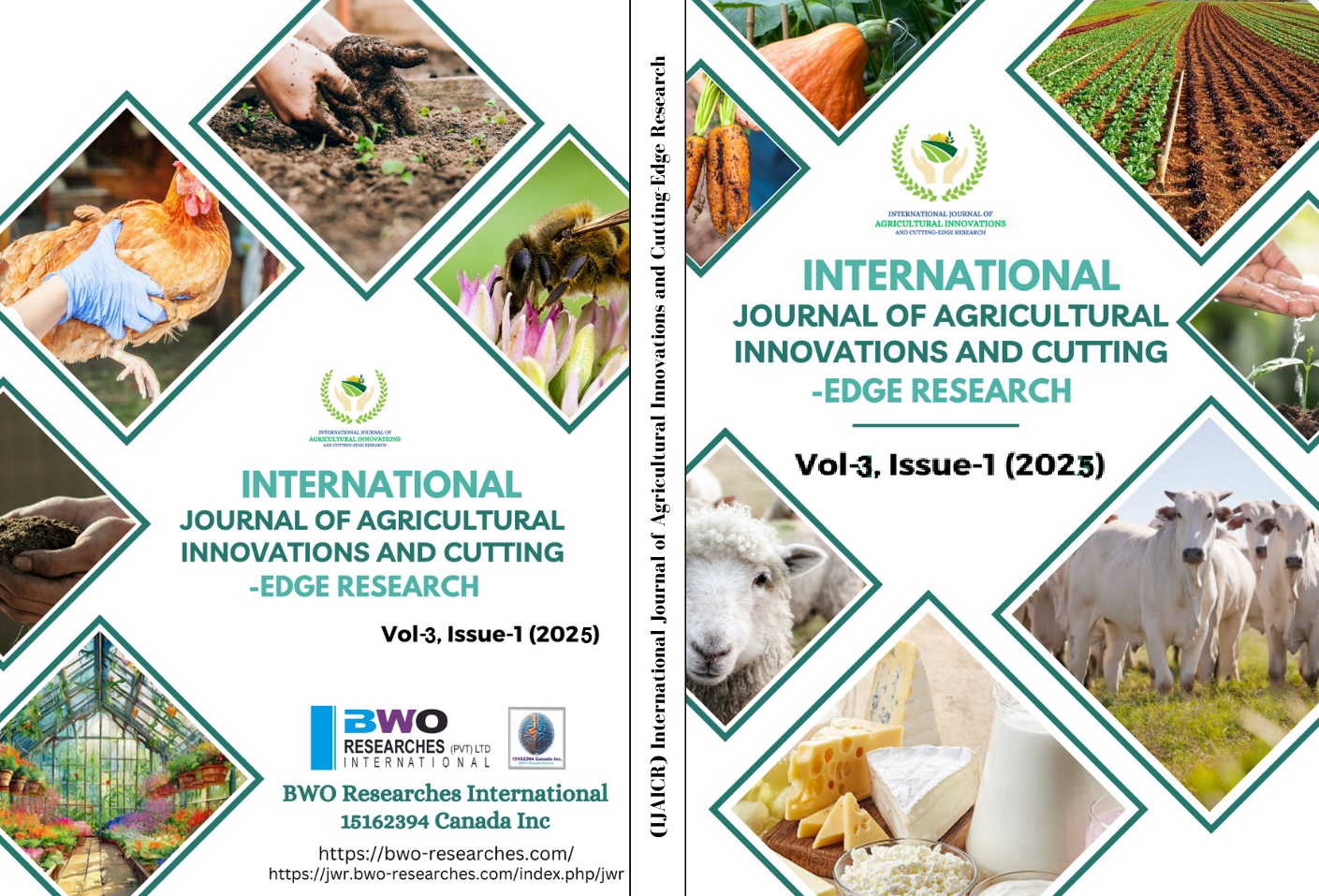Ethnobotanical, Phytochemical, and Biological Study of Tamarix Aphylla in Tehsil Paroa, District Dera Ismail Khan
Keywords:
Phytochemical analysis, Secondary metabolites, Biological activities, Antimicrobial properties, Tamarix aphyllaAbstract
Tamarix aphylla, a plant species native to Tehsil Paroa in District Dera Ismail Khan, KPK, Pakistan, has long been embedded in the local culture and traditional medicine practices. This study presents a comprehensive exploration of the ethnobotanical, phytochemical, and biological attributes of T. aphyla in this region. Extensive field surveys and interviews with local communities revealed a rich tapestry of traditional knowledge. T. aphyla finds diverse applications, including medicinal uses for ailments ranging from digestive disorders to dermatological conditions. The plant also holds cultural significance in rituals and ceremonies. Plant specimens were meticulously collected and subjected to extraction processes. Phytochemical screening unveiled the presence of various secondary metabolites, including alkaloids, flavonoids, terpenoids, tannins, and phenolic compounds. Advanced analytical techniques further elucidated specific chemical constituents. Biological assays showcased promising activities of T. aphyla extracts, including potent antimicrobial properties against clinically relevant pathogens. These findings underscore the value of Tamarix aphylla in the traditional pharmacopoeia of Tehsil Paroa and warrant further exploration of its potential in modern medicine. This study contributes to the preservation of Indigenous knowledge and offers a foundation for future drug development endeavors.
References
Ahmad M, Zafar M, Sultana S. Salvadora persica, Tamarix aphylla and Zizyphus mauritiana-Three woody plant species mentioned in Holy Quran and Ahadith and their ethnobotanical uses in the northwestern part (DI Khan) of Pakistan. Pakistan Journal of Nutrition. 2009; 8(5):542-7.
Akhlaq M, Mohammed A. New phenolic acids from the galls of Tamarix aphylla (L.) Karst. Int Res J Pharm. 2011; 4:222-5.
Alhourani N, Kasabri V, Bustanji Y, Abbassi R, Hudaib M. Potential antiproliferative activity and evaluation of essential oil composition of the aerial parts of Tamarix aphylla (L.) H. Karst.: a wild-grown medicinal plant in Jordan. Evidence‐Based Complementary and Alternative Medicine. 2018; 2018(1):9363868.
Ali M, Alhazmi HA, Ansari SH, Hussain A, Ahmad S, Alam MS, Ali MS, El-Sharkawy KA, Hakeem KR. Tamarix aphylla (L.) Karst. Phytochemical and bioactive profile compilations of less discussed but effective naturally growing Saudi plant. Plant and Human Health, Volume 3: Pharmacology and Therapeutic Uses. 2019; 343-52.
Andrade-Cetto A, Heinrich M. From the field into the lab: useful approaches to selecting species based on local knowledge. Frontiers in pharmacology. 2011; 9:2:20.
Arbab AH, Parvez MK, Al-Dosari MS, Al-Rehaily AJ, Ibrahim KE, Alam P, Alsaid MS, Rafatullah S. Therapeutic efficacy of ethanolic extract of Aerva javanica aerial parts in the amelioration of CCl4-induced hepatotoxicity and oxidative damage in rats. Food & Nutrition Research. 2016; 60(1):30864.
Bedair H, Shaltout K, Ahmed D, Sharaf El-Din A, El-Fahhar R. Characterization of the wild trees and shrubs in the Egyptian Flora. Egyptian Journal of Botany. 2020; 60(1):147-68.
Deshmukh SK, Verekar SA, Chavan YG. Keratinophilic fungi from the vicinity of salt pan soils of Sambhar Lake Rajasthan (India). Journal de Mycologie Médicale. 2018; 28(3):457-61.
Działo M, Mierziak J, Korzun U, Preisner M, Szopa J, Kulma A. The potential of plant phenolics in prevention and therapy of skin disorders. International journal of molecular sciences. 2016; 17(2):160.
Han Z, Yin W, Zhang J, Niu S, Ren L. Active anti-erosion protection strategy in tamarisk (Tamarix aphylla). Scientific reports. 2013; 3(1):3429.
Kuntal DA, Raman DA, Sivaraman G, Ellath RP. Phytochemical screening for various secondary metabolites, antioxidant, and anthelmintic activity of Coscinium fenestratum fruit pulp: a new biosource for novel drug discovery. Turkish Journal of Pharmaceutical Sciences. 2018; 15(2):156.
Lemke P, Jünemann L, Moerschbacher BM. Synergistic antimicrobial activities of chitosan mixtures and chitosan–copper combinations. International journal of molecular sciences. 2022; 23(6):3345.
Makarewicz M, Drożdż I, Tarko T, Duda-Chodak A. The interactions between polyphenols and microorganisms, especially gut microbiota. Antioxidants. 2021; 10(2):188.
Mandal SM, Chakraborty D, Dey S. Phenolic acids act as signalling molecules in plant-microbe symbioses. Plant signalling & behavior. 2010; 5(4):359-68.
Sreenivasa MY, Diwakar BT, Charith Raj AP. Determination of toxigenic potential of Fusarium species occurring on sorghum and maize grains produced in Karnataka, India by using Thin Layer Chromatography. International Journal of Life Sciences. 2012; 6(1):31-6.
Strudley S, Dalin P. Tamarix as invertebrate habitat. Tamarix: a case study of ecological change in the American West. Oxford University Press, New York. 2013; 4:207-24.
Suleiman MH. An ethnobotanical, phytochemical, and biological study of Tamarix aphylla and Aerva javanica medicinal plants growing in the Asir region, Saudi Arabia. Tropical Conservation Science. 2019; 12, p.1940082919869480
Takó M, Kerekes EB, Zambrano C, Kotogán A, Papp T, Krisch J, Vágvölgyi C. Plant phenolics and phenolic-enriched extracts as antimicrobial agents against food-contaminating microorganisms. Antioxidants. 2020; 9(2):165.
Umair M, Altaf M, Bussmann RW, Abbasi AM. Ethnomedicinal uses of the local flora in Chenab riverine area, Punjab province Pakistan. Journal of ethnobiology and ethnomedicine. 2019; 15:1-31.
Vaou N, Stavropoulou E, Voidarou C, Tsigalou C, Bezirtzoglou E. Towards advances in medicinal plant antimicrobial activity: A review study on challenges and future perspectives. Microorganisms. 2021; 9(10):2041
Additional Files
Published
How to Cite
Issue
Section
License
Copyright (c) 2025 International Journal of Agriculture Innovations and Cutting-Edge Research (HEC Recognised)

This work is licensed under a Creative Commons Attribution-ShareAlike 4.0 International License.
BWO Research International
15162394 Canada Inc.,
Kitchener, ON, N2G2B3,
Canada

